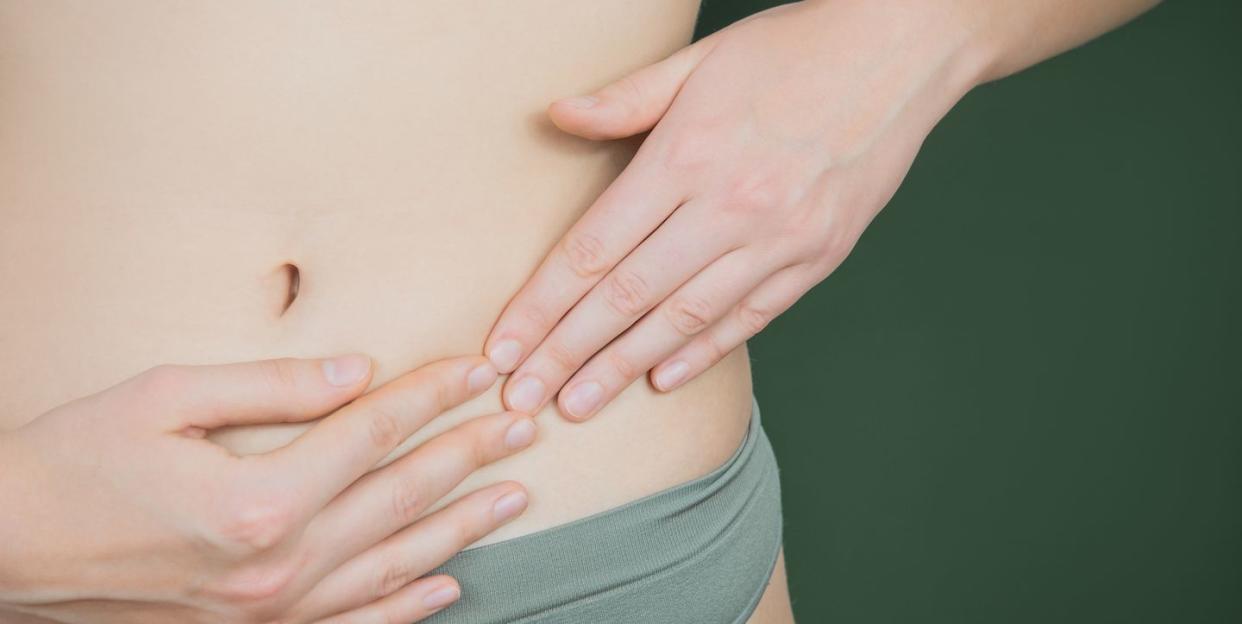Why are you more likely to develop diabetes if you have PCOS?

September marks Polycystic Ovary Syndrome (PCOS) awareness month. But, despite one in 10 women and those assigned female at birth (AFAB) in the UK suffering with PCOS, most of us still know so little about the condition – especially when it comes to its symptoms and complications.
In their book, Living PCOS Free, co-authors Dr Nitu Bajekal and nutritionist Rohini Bajekal explore the early warning signs of PCOS, as well as the risks associated with the condition and how to reduce them.
The book also explores the correlation between PCOS and type 2 diabetes, given that more than half of all PCOS sufferers develop type 2 diabetes before the age of 40.
With that in mind, we spoke to Dr Nitu Bajekal and Rohini Bajekal to find out more about PCOS and its link to type 2 diabetes.
How can women and those AFAB recognise PCOS?
There are plenty of early warning signs to look out for if you think you might be suffering from PCOS, although Dr Nitu Bajekal highlights that not everyone with the condition will have all, if any, of the symptoms.
The most common symptoms to look out for include infrequent or missed periods, excess facial/body hair, acne, scalp hair loss, unwanted weight gain, insulin resistance and fertility problems.

There's also a list of lesser known symptoms too, these include eating disorders (especially binge eating disorders), excessive daytime sleepiness, breathing problems (sleep apnoea/snoring), acanthosis nigricans (darkened skin behind the neck, underarms and groin), depression and anxiety.
How does PCOS relate to type 2 diabetes?
It's all to do with insulin resistance points out Dr Nitu Bajekal. "Insulin resistance, a condition when the cells in our body become resistant to the action of the hormone insulin, appears to be the main driver in causing PCOS and many of its symptoms," she says. "It increases the risk of pre-diabetes, type 2 diabetes and a range of other health issues."

What's the difference between type 1 and type 2 diabetes?
"Both forms of diabetes are chronic diseases that affect the way the body regulates glucose," explains Dr Bajekal.
As she puts it, "Glucose is the fuel that feeds your body’s cells but to enter the cells it needs a key. The hormone insulin, produced by our pancreas, is that key. People with type 1 diabetes, an autoimmune condition, do not produce insulin, so you can think of it as not having a key.
"But, people with type 2 diabetes do not respond to the insulin they produce as well as they should and later in the disease often don’t make enough insulin. This is like having a broken key."
What symptoms should those with PCOS look out for when it comes to developing diabetes?
"There are several signs that you may have insulin resistance," says Dr Bajekal, "If you gain excess weight, especially around the waist or if you notice signs of androgen excess, such as acne or excessive hair growth, then it is worth getting a medical opinion. You may notice thickening and darkening of the skin affecting your underarms, neck, perineal area, knuckles and/or elbows, which may also suggest you have insulin resistance."
Mood swings and intense sugar cravings can be symptoms of insulin resistance too.

Can you lower the risk of type 2 diabetes?
There are many ways that women and those AFAB with PCOS can reduce the risk of developing type 2 diabetes, but as Dr Bajekal says "it's important to treat the root cause of the issue – the insulin resistance."
She notes: "It is possible to reverse insulin resistance, particularly in the early stages. The aim is to make the body’s cells sensitive to the action of insulin again so that the glucose gets cleared from your bloodstream and picked up by your cells more efficiently, meaning your pancreas can stop producing so much."
So, how exactly can you do that? "By making changes to your lifestyle you can sensitise your tissues to insulin and help avoid the longer-term effects of untreated insulin resistance which can cause type 2 diabetes," says nutritionist Rohini Bajekal.
Rohini continues: "Losing even small amounts of excess body weight reduces the amount of intracellular fat within the cells, making them more sensitive to insulin. This in turn lowers insulin levels and improves insulin resistance, with many noticing an improvement in their PCOS symptoms."
What kind of lifestyle changes can help reduce the risk of type 2 diabetes?
Essentially, it all comes down to a balanced, healthy diet as well as exercise and getting enough sleep. "Eating a fibre rich, plant-based diet helps to promote healthy gut bacteria and helps to reduce inflammation and oxidative stress, normalise blood sugars and lower insulin resistance," explains Rohini.
"Physical movement and exercise are also immensely helpful in improving tissue sensitivity to insulin, especially when undertaken after meals to dampen blood sugar swings," she adds. "Adequate, restful sleep plays an important role in insulin sensitivity too."

As well as looking after your physical health, it's important to take care of your mental health. Dr Bajekal says stress management (including meditation) and positive social connections, can all play a part in managing PCOS and reducing the risk of developing type 2 diabetes.
How can PCOS and type 2 diabetes be treated?
"PCOS is a chronic condition, so while there is no 'cure', making positive lifestyle changes can go a very long way in managing PCOS and its symptoms, including insulin resistance, both in the short term and longer term," explains Dr Bajekal.
Dr Nitu Bajekal and nutritionist Rohini Bajekal's book, Living PCOS Free, is available for pre-order from 1st September and will be sold in all major bookshops from February 2022:
You Might Also Like


